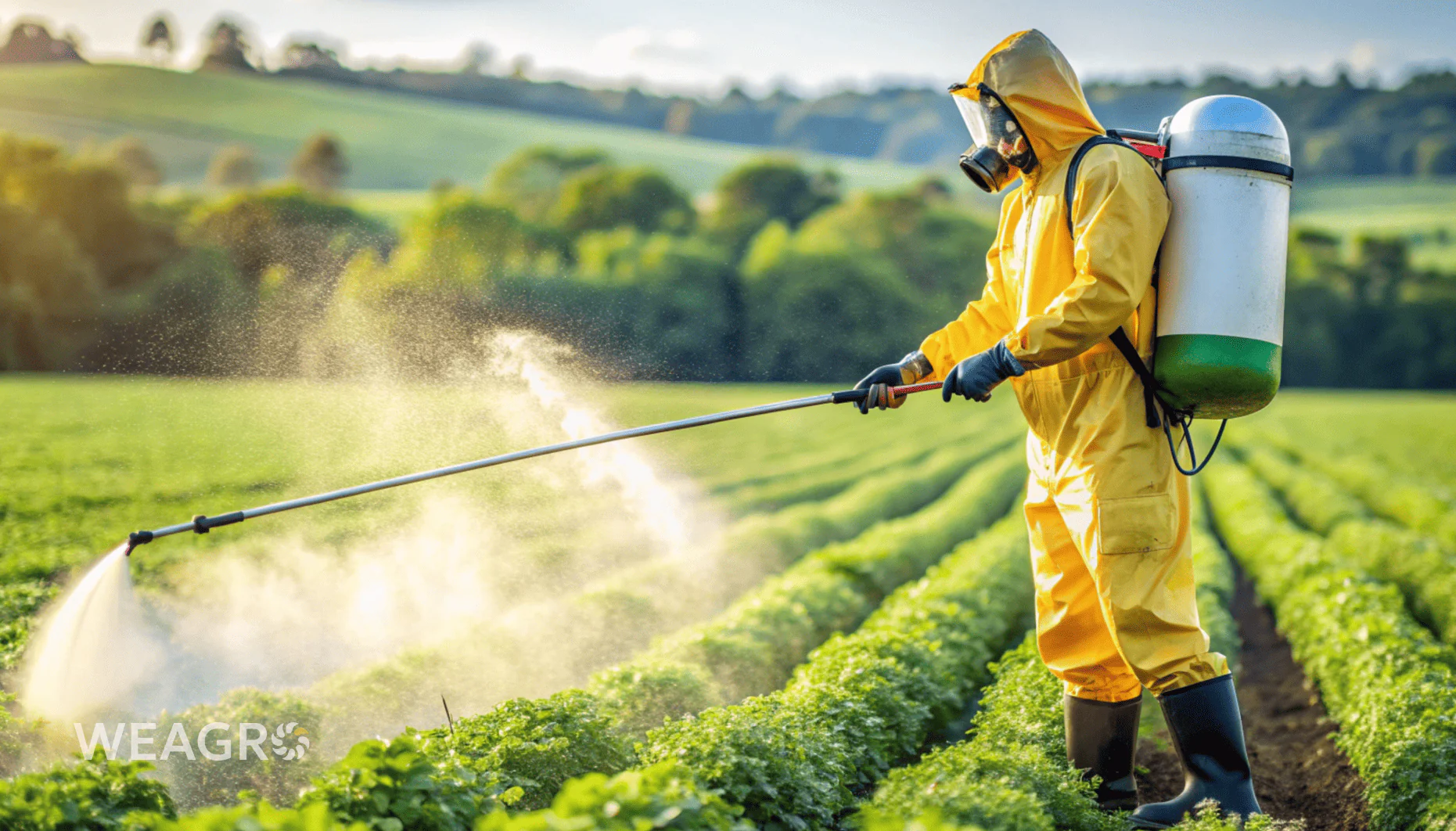What will happen to sunflower prices? After all, it’s one of the most profitable crops to grow in Ukraine. This oilseed plant is used to produce various products: from edible oil to livestock feed. In this article, we’ll examine the key aspects of sunflower cultivation: technologies, conditions, profitability, and price forecasts, which is valuable for both experienced farmers and those planning to start.
Sunflower Growing Technology
Sunflower is one of the most important oilseed crops in Ukraine, making the choice of optimal growing technology crucial for agricultural producers. Let’s examine in detail the features of different approaches used in our country’s conditions.
Classical Sunflower Growing Technology
The classical method of growing sunflowers remains the most common among Ukrainian farmers. It includes the following main operations:
- plowing at a depth of 20-30 cm to create a deep root zone and eliminate weeds;
- pre-sowing cultivation to level the soil surface and create a fine-crumb structure;
- sowing with 70 cm row spacing, which ensures optimal plant density and facilitates crop maintenance;
- mechanical care using row crop cultivators for weed control and soil loosening;
- weed protection based on applying soil herbicides before sowing or before emergence, and post-emergence herbicides during vegetation;
- application of mineral fertilizers in autumn during plowing and at sowing for initial plant growth.
The advantages of the traditional method are its proven reliability and effectiveness. The classical sunflower growing technology allows effective weed control and stable yields. Disadvantages include significant fuel costs for plowing and mechanical cultivation, soil compaction, and erosion risk.
Read also: Soil erosion: causes, types, control measures
Minimum Tillage Technology
Minimum, or resource-saving, technology aims to reduce costs and preserve soil fertility. Its key elements include:
- replacing plowing with subsurface tillage using chisel or disc implements at a depth of 16-20 cm;
- combining multiple operations (such as pre-sowing cultivation and sowing) in one machinery pass to reduce field traffic;
- eliminating mechanical maintenance or limiting the number of inter-row cultivations;
- increased use of post-emergence herbicides for weed control, as the absence of plowing promotes weed growth;
- using cover crops and crop residues to enrich soil with organic matter and improve its structure.
Minimum tillage better preserves moisture, which is important in conditions of insufficient moisture. It also reduces fuel and labor costs. However, this technology requires more careful crop rotation planning, pest monitoring, and the use of modern crop protection products.
Intensive Sunflower Growing Technology
Intensive sunflower growing technologies are based on using all complex factors to unlock the genetic potential of modern high-yielding hybrids. This includes:
- Optimizing crop placement in rotation after better predecessors (winter wheat, cereal grains, legumes).
- Soil diagnostics of nutrient content to select the most balanced fertilization system.
- Split fertilizer application, including the use of liquid complex fertilizers and micronutrients for foliar feeding.
- Application of growth regulators to improve crop development and stress resistance.
- Increasing plant density to 60-70 thousand per hectare for more efficient use of feeding area.
- Irrigation to optimize water regime of crops, especially during critical flowering and seed filling phases.
Intensive technologies can ensure crop yields over 4 t/ha, but they require significant investments: fertilizers, plant protection products, and high-performance equipment come at a serious cost. Additionally, all methodology requirements must be strictly followed, with regular crop monitoring.
No-till Technology
Modern sunflower growing technologies, such as no-till method, are gaining increasing popularity worldwide and in Ukraine. The main principle of no-till is abandoning mechanical soil cultivation and sowing directly into untilled soil using specialized seeders. The advantages of this approach include:
- preserving soil structure and preventing erosion processes;
- moisture retention through crop residue mulch;
- increasing organic matter content and soil biological activity;
- reducing fuel consumption and labor costs.
However, transitioning to no-till technology comes with certain challenges and risks, including:
- need for more thorough weed control, especially perennials, using non-selective herbicides;
- slower soil warming in spring due to plant residue cover;
- changes in fertilization approaches (switching to surface application, using liquid forms);
- need for specialized equipment for sowing – direct seeders, sprayers for crop protection products.
The success of no-till implementation depends on careful adherence to crop rotation and avoiding monoculture. It’s also important to consider soil characteristics – heavy waterlogged soil shows less effectiveness with this technology.
Therefore, the choice of sunflower growing technology should be made considering specific climate conditions, farm resources, logistical and market factors. Many agricultural enterprises use a differentiated approach, combining classical methodology on some fields with minimum tillage, no-till, or intensive approach on others. This allows optimizing production costs, improving soil fertility, and ensuring stable economic results.
Read also: No-till technologies: what it is, prospects in Ukraine
Essential Conditions for Growing Sunflowers

Sunflower is a relatively undemanding crop, but successful commercial cultivation requires creating the right conditions. Let’s examine the main factors.
The crop is grown in various regions of Ukraine, but the most favorable areas for sunflower cultivation in Ukraine are in the south and center. This is due to warm climate and fertile black soil. Overall, the country ranks among the world’s top three sunflower producers.
This crop requires plenty of sunlight – minimum 6 hours per day. Optimal growing conditions for sunflower regarding temperature are 21-26°C. Sunflower is sensitive to frost and can die at -3 to -5°C within 6 hours. The best soils are well-drained with pH 6.5-7.5. These can be black soil, sandy and loamy soils. It’s important that they aren’t compacted and absorb moisture well.
Moisture requirements depend on the hybrid, planting density, and soil type. On average, sunflower needs 500-670 mm of precipitation or irrigation during vegetation. The critical period for moisture deficit is from flowering to seed filling. The crop has a deep root system and can access water from layers up to 1.5 m deep.
Read also: Sunflower diseases and pests: types and plant protection methods
Profitability of Sunflower Growing
Sunflower cultivation in Ukraine is among the most profitable areas of crop production. According to
The main financial flows in cultivation go to seeds, fertilizers, plant protection products, and fuel and lubricants. Material costs account for the largest share in the cost structure – up to 65%. Labor costs and depreciation account for 10-15%.
According to Ministry of Agriculture data, the average sunflower yield in Ukraine in 2023 was 2.34 t/ha. Meanwhile, modern hybrids and technologies allow achieving 3.5-4 t/ha. With an average selling price of 22,000 UAH/t and costs of 15,000 UAH/ha, the marginal profit is about 17,000 UAH/ha.
The main sales channels are processing enterprises, export companies, and domestic market sales. Most of the harvest goes to sunflower oil production, 95% of which Ukraine exports, ranking first globally in supply volumes.
Read also: Product profitability: what it is and how to calculate the indicator
To increase the economic efficiency of crop cultivation and reduce sunflower growing costs, farmers use methods such as:
- using modern high-yielding hybrids;
- optimizing fertilization and protection systems;
- irrigation for yield stabilization;
- following crop rotation to improve soil condition;
- investing in own logistics and storage facilities.
For effective financial management, farmers can use our innovative service WEAGRO. This is a convenient online tool that allows farmers to purchase necessary material and technical resources with deferred payment – without collateral, additional documents, or currency risks. The service is particularly relevant for farms with land banks up to 1000 hectares who aim to optimize their expenses and effectively distribute financial load throughout the season. With WEAGRO, farmers can receive necessary resources for growing day by day, paying part of the amount with their own funds and the rest according to a convenient payment schedule. This enables investment in farm development and increases production profitability.
Sunflower Price Outlook for the New Season
So, what will happen to sunflower prices? For 2024 harvest crops in Ukraine, there is an upward trend. This is supported by news about the condition of planted areas and forecasts of lower gross harvest compared to last year.
Among the reasons for possible price increases, analysts highlight:
- Expected lower harvest due to weather conditions. In August, the production forecast was reduced to 14.2 million tons, which is 4% less than in 2023.
- Restrained sales by oilseed farmers who expect further price increases.
- High competition among processors for quality raw materials in the domestic market.
Currently, farmers are gradually moving to the new harvest campaign, but the global supply for sunflower cultivation is still very limited. This mostly concerns early varieties that were partially affected by heat.
Thus, the sunflower market shows an upward price trend at the start of the 2024/25 marketing year. Further dynamics and possible reasons for sunflower price decreases will depend on actual yield indicators, harvesting pace, and export activity.









